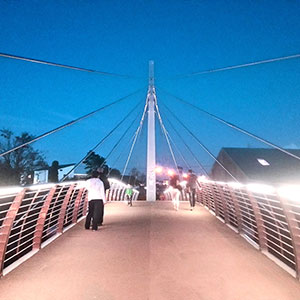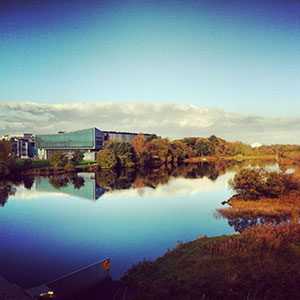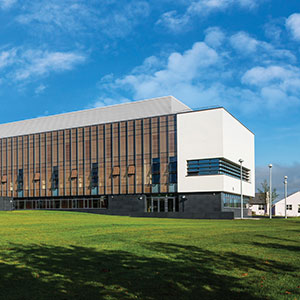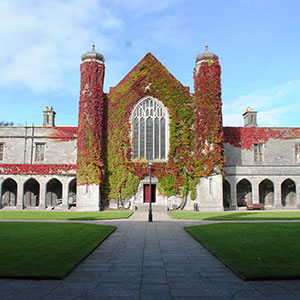-
Courses

Courses
Choosing a course is one of the most important decisions you'll ever make! View our courses and see what our students and lecturers have to say about the courses you are interested in at the links below.
-
University Life

University Life
Each year more than 4,000 choose University of Galway as their University of choice. Find out what life at University of Galway is all about here.
-
About University of Galway

About University of Galway
Since 1845, University of Galway has been sharing the highest quality teaching and research with Ireland and the world. Find out what makes our University so special – from our distinguished history to the latest news and campus developments.
-
Colleges & Schools

Colleges & Schools
University of Galway has earned international recognition as a research-led university with a commitment to top quality teaching across a range of key areas of expertise.
-
Research & Innovation

Research & Innovation
University of Galway’s vibrant research community take on some of the most pressing challenges of our times.
-
Business & Industry

Guiding Breakthrough Research at University of Galway
We explore and facilitate commercial opportunities for the research community at University of Galway, as well as facilitating industry partnership.
-
Alumni & Friends

Alumni & Friends
There are 128,000 University of Galway alumni worldwide. Stay connected to your alumni community! Join our social networks and update your details online.
-
Community Engagement

Community Engagement
At University of Galway, we believe that the best learning takes place when you apply what you learn in a real world context. That's why many of our courses include work placements or community projects.
April Tidal research reveals power of Storm Éowyn and unfathomable near-miss
Tidal research reveals power of Storm Éowyn and unfathomable near-miss
A research team at University of Galway has revealed that Storm Éowyn generated the highest storm surges ever recorded at key locations on Ireland’s western seaboard.
By analysing sea level information from 47 datasets provided by the Irish National Tide Gauge Network and the Office of Public Works, the team based at the University’s School of Engineering have highlighted the unprecedented power of the storm’s surge – more than 2.5 metres above the normal predicted tidal water level.
Storm Éowyn, one of the most powerful storms to hit Ireland in recent years, also saw record-breaking winds. The highest gust recorded was 184 km/h, with the highest 10-minute wind speed reaching 142 km/h at Mace Head Atmospheric Research Station in County Galway.
Despite the severity of Storm Éowyn in other ways and the devastation wrought by hurricane force winds and lasting damage to power and water supplies, the timing of the tides during storm landfall meant little to no flooding impacts.
The research team highlighted data from three coastal locations during Storm Éowyn - Galway Port, Limerick Docks and Shannon Airport.
- At Galway Port, the storm surge peaked at 2.60 meters above the normal predicted astronomical tide, the highest ever recorded at this station since its operation began in 2007
- At Limerick Docks the highest surge along the western coastline was recorded - reaching 2.99 meters above tidal level
- At Shannon Airport, the tidal gauge recorded surge of 2.70 meters.
Had these surges occurred a week earlier during the high water spring tide, the water levels would have been much higher, with data predicting that the water level at Galway Port would have reached 4.96m, Limerick Dock at 5.85m, and Shannon Airport at 5.43m above mean sea level, inundating the areas.
Dr Indiana Olbert, School of Engineering at University of Galway’s College of Science and Engineering, said: “Extensive research suggest that flooding has increased in frequency and severity in recent decades around the world and this is attributed to climate change. Our analysis of the drivers of flooding in Ireland show that the anthropogenic climate change – that's the changes related to human activity - will drive more extreme rainfall and generate more intense flooding. Such changes are likely to continue with further warming. In future we will witness more extreme weather events that will result in devastating floods.
“Our analysis also shows that a rise in mean sea level rise will significantly increase the risk of coastal flooding in the future. The data we have recovered from the hours around Storm Éowyn shows just how narrowly tens of thousands of people avoided tidal inundation and threats to cities, towns and coastal communities. It is hard to imagine how narrowly we avoided unprecedented storm surge flooding and an inundation, in particular in towns and cities.”
Dr Niall Madden, Mathematical and Statistical Sciences at University of Galway, said: “In spite of how devastating Storm Éowyn was, in an odd way, we were incredibly lucky. The worst of the storm surge coincided with a low and ebbing tide. Had it hit just a few hours earlier, on a full or flooding tide, Galway could have been dealing with a double disaster of record high winds and record high flooding.”
Ends















